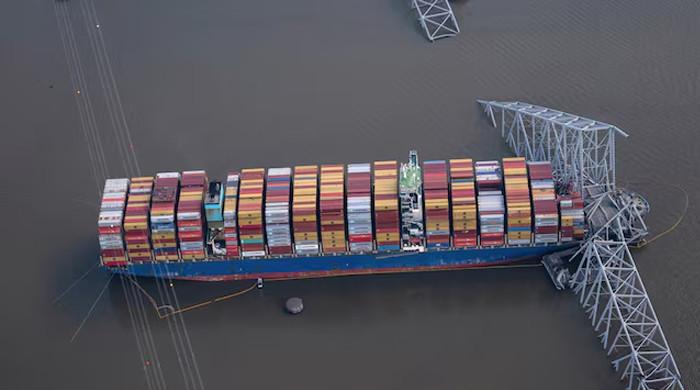The NTSB said Tuesday that a loose cable caused a power outage on the 984-foot freighter Dali, leading to its March 2024 collision with Baltimore’s Francis Scott Key Bridge, which killed six construction workers and destroyed the span.
The investigation found that a single loose wire in the electrical system caused a circuit breaker to open unexpectedly, triggering a sequence of events that led to the ship’s two power outages and loss of propulsion and steering.
The National Transportation Safety Board, in its final findings on the cause of the accident, found that the label strips on the wires prevented full insertion of the wire, causing an inadequate connection.
NTSB Chair Jennifer Homendy compared the painstaking search for the wire to finding a single loose rivet on the Eiffel Tower. The NTSB and the ship’s builder HD Hyundai Heavy 329180.KS had to test thousands of cables to find the problem, she added. “It’s like looking for a needle in a haystack.”
The board also said contributing to the collapse was the lack of countermeasures to reduce the bridge’s vulnerability to ocean-going vessel impacts, which could have been implemented if a vulnerability assessment had been conducted by the Maryland Transportation Authority.
A replacement bridge was initially estimated to cost $1.7 billion to $1.9 billion and would be completed by the end of 2028. On Monday, state officials said they now expect the bridge to cost between $4.3 billion and $5.2 billion and not open to traffic until late 2030. They cited a new pier protection system and a new longer and taller design as reasons for the increased costs.
Board staff said it recommended operators perform periodic inspections of high-voltage distribution boards and proposed changes that would allow vessels to recover more quickly from a loss of power.
The NTSB previously said the Dali lost electrical power several times before the accident on the Key Bridge, including during a power outage during maintenance in the port and shortly before the accident.
Power outages can occur on the water, and the NTSB has made many new recommendations to prevent catastrophic collisions, including for the U.S. Coast Guard. It also asked Hyundai Heavy to incorporate “proper methods of installing metal strips.”
In response to questions about the NTSB’s findings, HD Hyundai said in a statement that it delivered a safe, seaworthy vessel in 2015 with automated systems and critical redundancies to quickly respond to power outages, but “unfortunately, the owner and operator circumvented these safeguards.”
The company added that when the vessel was delivered, “there was no indication that any cable was loose” and said that if a cable came loose “over the course of a decade, due to vibration or otherwise, the owner and operator should have detected it during routine inspection and normal maintenance.”
The Key Bridge, like many other bridges, was not equipped with a warning system to prevent motorists from traveling on the bridge in case of danger.
Bridge Safety Assessment
In March, the board requested urgent safety assessments of 68 bridges in 19 states, including crossings like the Golden Gate Bridge, Chesapeake Bay Bridge, Brooklyn Bridge and George Washington Bridge. The NTSB recommended Tuesday that major bridge owners consider adopting motorist warning systems that can activate when a threat is identified to immediately prevent motorists from entering the bridge in the event of an emergency.
The review focused on bridges built before 1991 and frequented by ocean-going vessels which have not been subject to vulnerability assessments.
The NTSB said last year that the Dali lost power about four minutes before the accident when electrical circuit breakers tripped unexpectedly, causing all of the ship’s lights and most equipment to lose power while it was 0.6 miles (1 km) from the bridge.
The FBI is conducting a criminal investigation into the collapse.
Homendy said some of the ship’s personnel were still in the United States.




